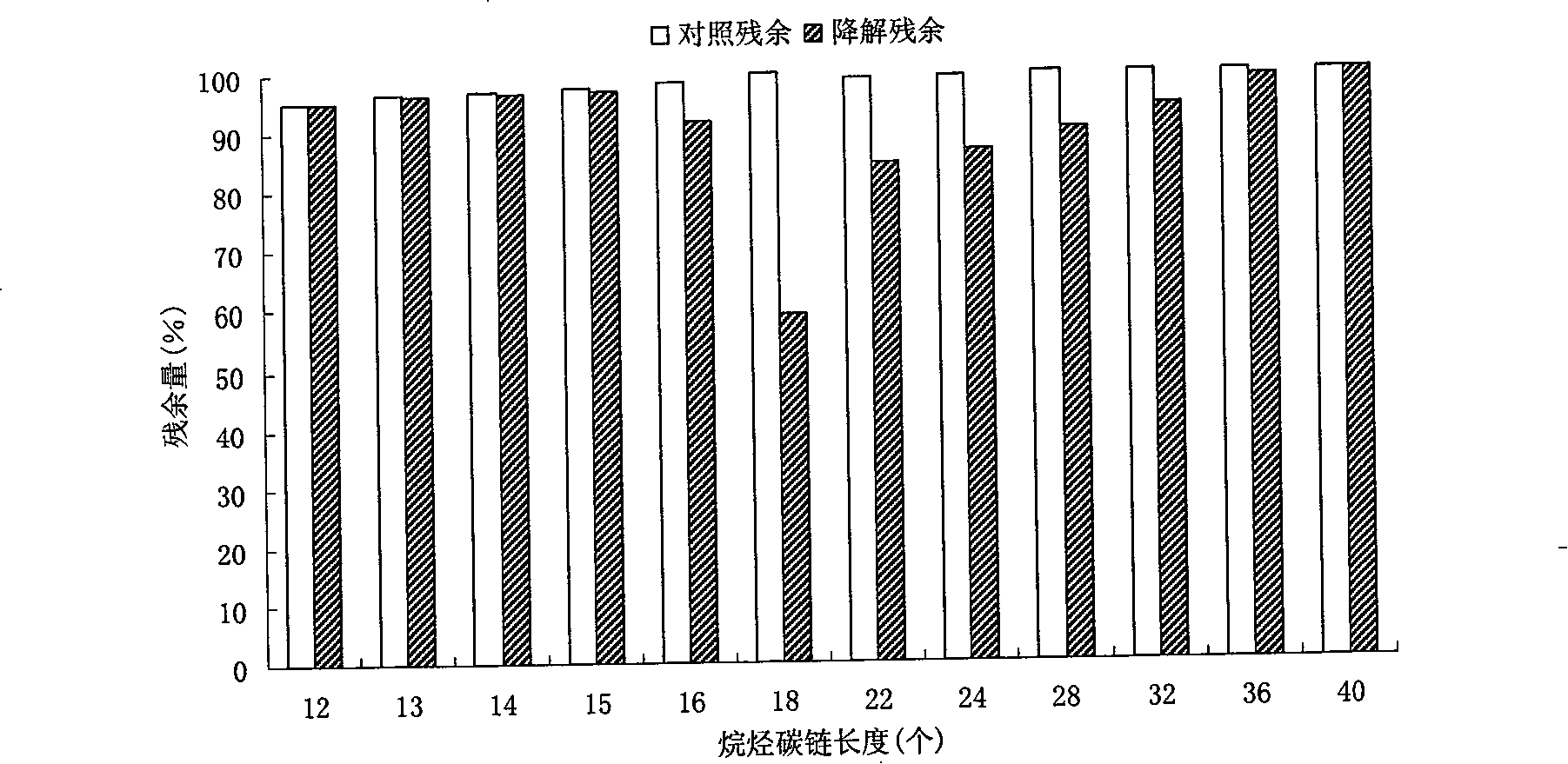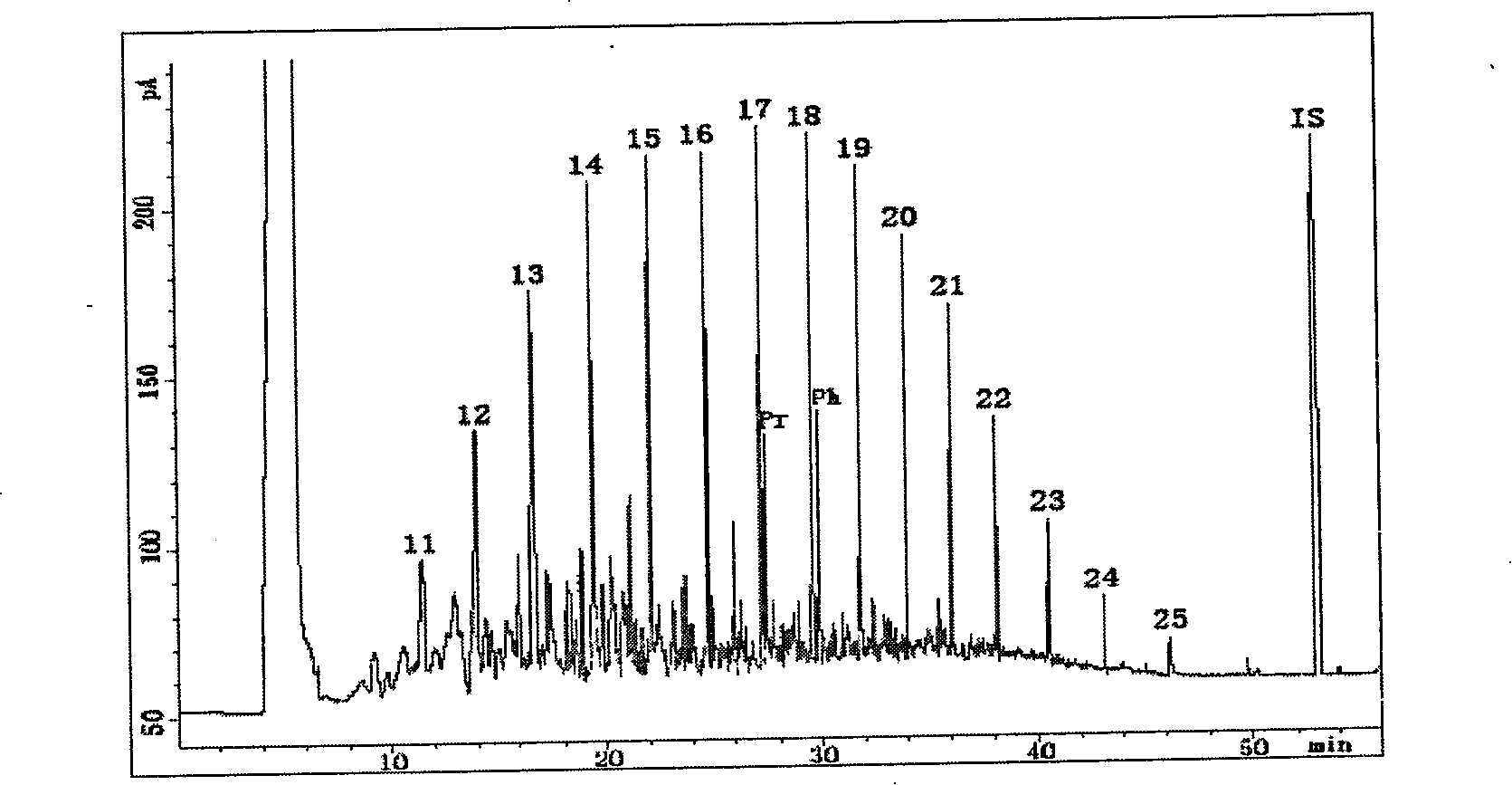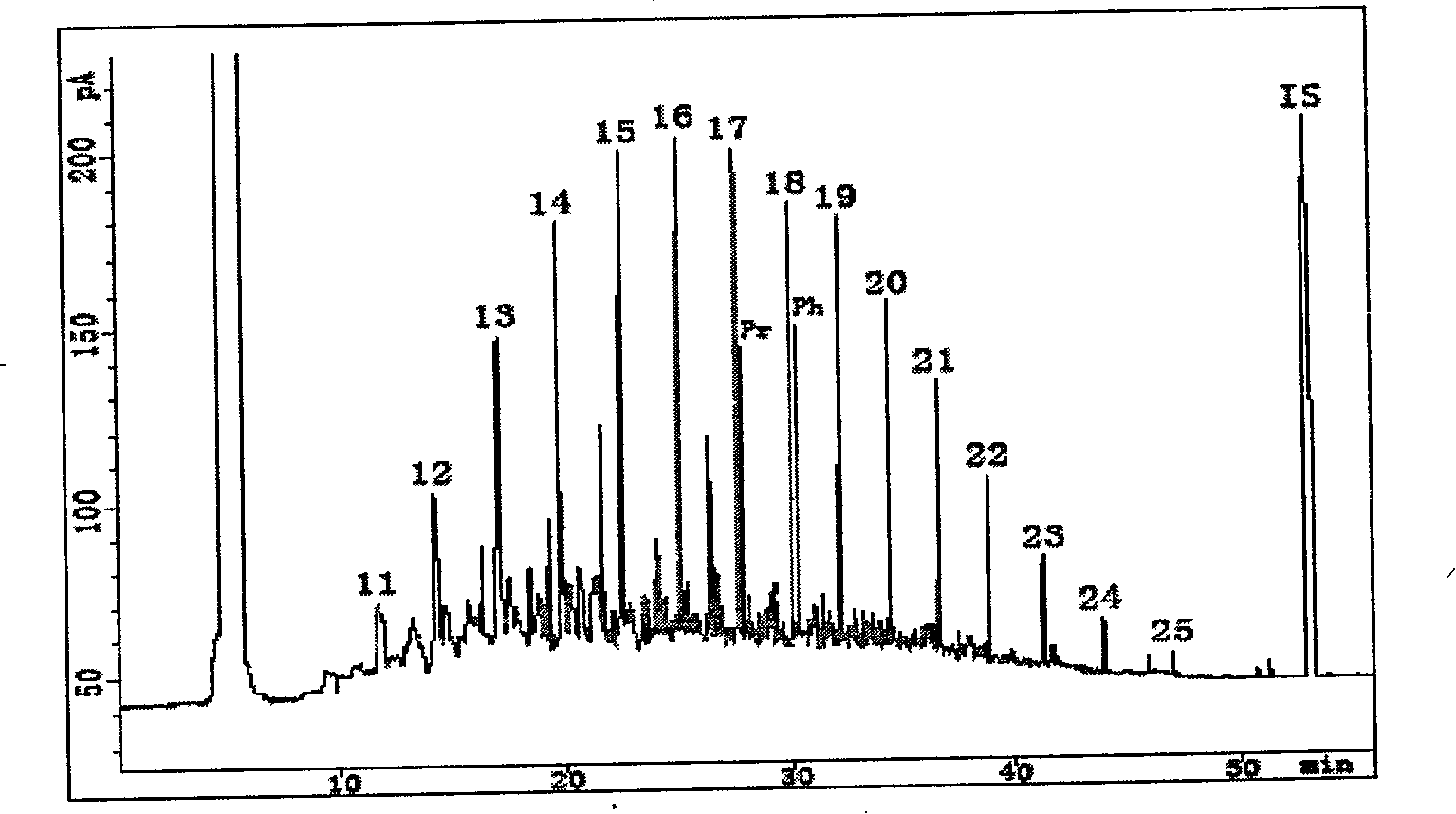Minimal gingivalis T7-7 degrading hydrocarbon under low temperature and uses thereof
A micromonas, strain technology, applied in the field of microbial biotechnology and environmental biology, can solve problems such as marine oil pollution and serious problems, and achieve the effect of effective degradation
- Summary
- Abstract
- Description
- Claims
- Application Information
AI Technical Summary
Problems solved by technology
Method used
Image
Examples
Embodiment 1
[0029] Screening and breeding of the Pusillimonas sp. T7-7 strain provided by the present invention.
[0030] Mud samples were collected from the oil-polluted seabed area of the Bohai Sea. The latitude and longitude coordinates are 118°26′36″ east longitude and 38°50′30″ north latitude. Get 5g mud sample in 100mL liquid paraffin as the inorganic salt culture medium of sole carbon source (substrate composition: KH 2 PO 4 3.48, Na 2 HPO 4 12H 2 O 1.5, NH 4 SO 4 2. MgSO 4 ·7H 2 O 0.70, yeast extract 0.05; liquid paraffin content 2%; distilled water, 1000ml; pH7.2; sterilized at 121°C for 30min), placed on a 200r / min low-temperature shaker at 15°C for enrichment culture for 7 days, and obtained 7 strains by marking The mixed flora of the bacteria was named as T7-1~T7-7; 5mL of the enrichment solution was taken and transferred to a fresh 100mL liquid paraffin medium for fermentation and culture, and the culture conditions were the same as above; after three cycles of e...
Embodiment 2
[0044] The morphological characteristics and physiological and biochemical characteristics of the Pusillimonas sp. T7-7 bacterial strain provided by the present invention.
[0045] According to the experimental method of "Bergey's Manual of Systematic Bacteriology" (Vol. VIII), the Gram staining, cell size and shape, presence or absence of flagella and spores, growth temperature, growth pH range, and NaCl tolerance were detected. Catalase, oxidase, M.R. experiment, V-P experiment, indole production, nitrate reduction, nitrite reduction, denitrification, starch hydrolysis, ammonia production experiment, urease, hydrogen sulfide production, gelatin hydrolysis, glucose fermentation, litmus milk Experiment, decomposition of aescin experiment.
[0046] Gram staining is negative, the bacteria are short rod-shaped, single-ended polar flagella, able to move, facultatively aerobic, and the cell size is 0.2-0.5μm (width)×0.5-1.0μm (length). The growth temperature is 4-37°C, the growth ...
Embodiment 3
[0048] Analysis of cell wall fatty acids of the Pusillimonas sp. T7-7 strain provided by the present invention.
[0049] Take an appropriate amount of bacterial culture, put it in an 8ml screw-top glass tube, add 1ml solution I (45g sodium hydroxide dissolved in 150ml methanol and 150ml distilled water), tighten the screw cap, put it in a boiling water bath for 5min, take it out and shake it for 5-10 seconds, and tighten it again Screw the cap on, and continue the boiling water bath for 25 minutes; after the sample tube is cooled, add 2ml of solution II (190ml of concentrated hydrochloric acid, 275ml of methanol dissolved in 135ml of distilled water), cover tightly and shake, then precisely control the water bath at 80±1°C for 10min, and cool in an ice bath; add 1.25ml of solution III (mix 200ml of n-hexane and 200ml of diethyl ether evenly), shake rapidly for about 10min, discard the lower aqueous phase; add 3ml of solution IV (10.8g of sodium hydroxide dissolved in 900ml of d...
PUM
 Login to View More
Login to View More Abstract
Description
Claims
Application Information
 Login to View More
Login to View More - R&D
- Intellectual Property
- Life Sciences
- Materials
- Tech Scout
- Unparalleled Data Quality
- Higher Quality Content
- 60% Fewer Hallucinations
Browse by: Latest US Patents, China's latest patents, Technical Efficacy Thesaurus, Application Domain, Technology Topic, Popular Technical Reports.
© 2025 PatSnap. All rights reserved.Legal|Privacy policy|Modern Slavery Act Transparency Statement|Sitemap|About US| Contact US: help@patsnap.com



